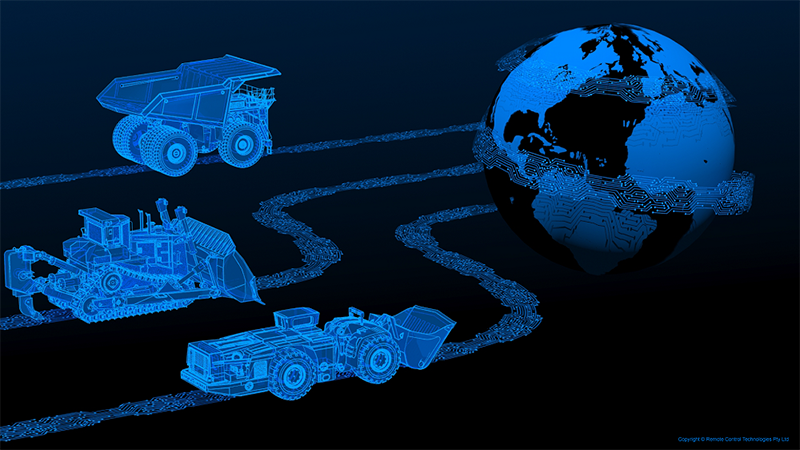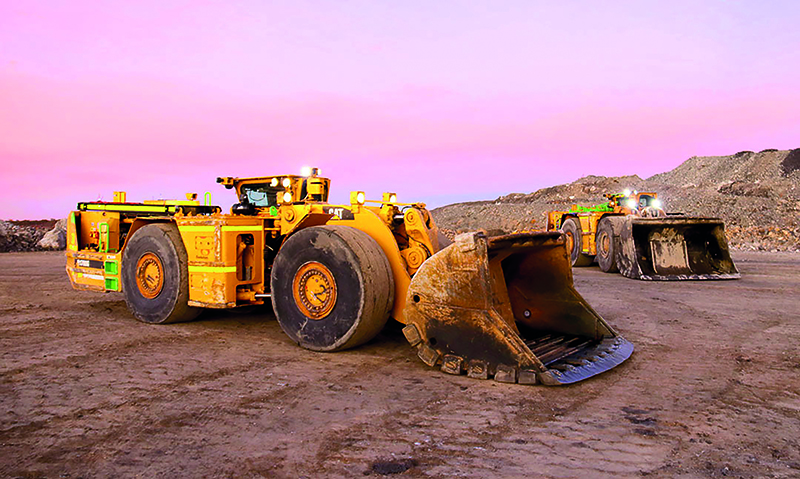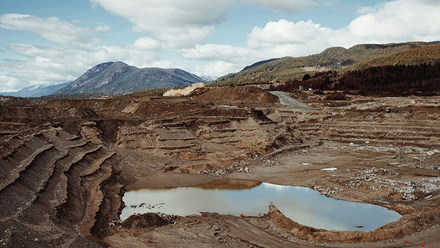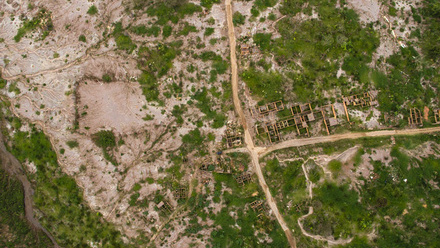A technological evolution in mining
As mining processes shift from mechanisation to digitisation, Shardell Joseph uncovers the drive behind the technological evolution and how it is redefining the industry.

‘From the beginnings of the advent of new technology with mechanisation, right the way through to today – sophisticated control systems, artificial intelligence and robotics – we are getting to that stage now where everything that you buy, has some form of internet connectivity,’ reflects Paul Bradley FIMMM, Head of Operations at the Health and Safety Executive (HSE) and member of the IOM3 Mining Technology Division (MTD).
‘If the Mars expedition at this moment in time shows what we can do from such a remote place controlled by humans and machines on Earth, why would it be surprising that we could do exactly the same on the ground in mining activities?’
Implementing and digitising technology in the mining sector has become a valuable tool to optimise processes and maximise value, ranging from artificial intelligence (AI) to the Internet of Things (IoT) and automated systems. In a report by RCT Global, Digitisation in mining, the US-based automation technology company reveals that the transformation of the industry is seeing positive results in four key areas – productivity, profitability, efficiencies and safety.
‘We never got this far in the UK. But if you [look at] a system that Komatsu [Japanese mining equipment manufacturer] sold, every operation on the coalface, which is the movement of the machine cutting the coal, the transport of that mineral from the coalface, through to the production plant is purely automated. [The operators] monitor the process,’ explains Neil Battison FIMMM, Regulation Directorate at HSE and member of MTD.
‘My view is the technology is there to totally automate all mining processes today. It's the will and capital expenditure, as well as the mine operator, to implement the level of technology that they feel is appropriate to the operation.’
Battison demonstrates this based on the law term ‘so far as is reasonably practicable’, used commonly in health and safety guidance and regulation. ‘If it's going to cost a million pounds to stop altogether a black fingernail, that's not really reasonably practicable, and you won't expect it.
‘If it is £10 to fit a guard to protect somebody getting around in a rotating machine, that's very reasonably practicable. I think the consideration has to be, what I have to spend in capital on equipment, computer software, etc, and what will be the benefit of that?’
Nicholas Prevost, Director of Mining at telecommunications company Inmarsat, UK, adds, ‘Two years on from our last research in 2018, we wanted to get a measure of what had changed in the mining industry. What we uncovered was an industry that, despite being historically slow to adopt radical ideas, is starting to embrace the use of IoT with the technology beginning to gain a foothold in the sector, but organisations are still working out how to make the most of it.
‘Nearly all respondent organisations (95%) that we surveyed [out of 200] are currently trialling IoT-enabled projects and two thirds of these organisations (67%) have already fully deployed at least one IoT-based project. This uplift has been borne out of the need to drive increasing efficiencies – to do more, with less – as well as increasing staff productivity and improving the health and safety of staff. However, our research also showed that these projects have been relatively simple and not all of the projects are getting through the trial phase.’
Investing in transforming mining processes is not only being taken on by companies, but is also being embraced by governments and multinational organisations.
The European Commission recently granted €8.4mln to a three-year Horizon 2020 project called Goldeneye, with the aim to create an AI platform for the monitoring and analysis of mine sites across Europe.
According to VTT Technical Research Centre of Finland – coordinators of the consortium of 16 European companies – the project aims to improve safety and efficiency and lower environmental impact by developing earth observation technologies with onsite sensing. This will be achieved by implementing a combination of remote sensing and positioning technologies with data analytics and machine-learning algorithms, allowing satellites, drones and in situ sensors to collect high-resolution data of an entire mine.
Navigating the health and safety minefield
Reducing the risks in hazardous mining environments is a central factor in pushing implementation of new technologies such as remote monitoring systems.
‘We've gone from the human interface of the man operating the anvil on the machinery to automated [processes].’ Battison notes. ‘You do two things – you remove the man from the pain point, as we call it, where the most danger is. And you remove him from the environment of dust, gases, mine gases and all the other [hazards].
‘And the intelligence is that if it goes out of the parameters, it stops itself until somebody comes to put it right.’
Bradley suggests that using more autonomous machinery by remote control, for example, allows operators greater awareness of the changing environment. ‘Not only is there monitoring information that's readily available, and can be much more sophisticated, it is not reliant on people testing for those kind of safety metrics on a routine basis and is done as a continuous process.
‘If the technology is reasonably practicable, it can provide a better environment, create better data, improve the equipment and improve the experience for the end-users,’ he adds. ‘When it becomes readily available and it's cost effective, not only is there an expectation that it will improve business efficiency but will also improve health and safety performance and monitoring arrangements. Therefore, they go hand-in-hand. Good health and safety management is good business management and reduces the risks to both.’
Battison, however, highlights the resistance to high-level monitoring systems, which some argue can infringe the privacy of employees. ‘From the unions’ and HR [perspective], they think it is big brother watching – that was always a very, very big problem.
‘But as a safety regulator, the upside is when that technology is used, if there's a significant event, escape and rescue can be permitted a lot better because you know where all the people are, and you are taking that person away from the danger area.’
Internet of Things (IoT) take-up
Of the 200 mining organisations surveyed by Inmarsat, UK:
- 67% of organisations have fully deployed at least one IoT project
- 95% are currently trialling IoT-enabled projects
- 2% have not begun an IoT project
- 69% plan to start IoT projects within the next two years
- 53% report that cybersecurity has not been a priority for their IoT solutions
- 11% have taken steps to strengthen their approach to IoT security

Mitigating hacks
Bradley considers how IoT has shaped the level of risk exposure.
‘The right control measures and the right barriers have to be in place and software has to be designed such that, a person in a bedroom somewhere, or some...foreign power, cannot hack into the system and do some real damage. Not only business damage, but also potentially life-threatening damage – we have deep shafts.
‘[Also] mines that really do depend on the ventilation circuits,’ Bradley continues. ‘And if things were to be hacked into and threatened there, it could cause some significant issues in the mining world. It is absolutely crucial that cyber security and protection of the Internet of today's world is secure.’
Although most organisations are aware of these new dangers, the Inmarsat report finds that introducing measures to address them have, so far, been insufficient.
‘As mining companies are beginning to connect more of their operational infrastructure to networks and the internet through IoT-related technologies, it is inevitable that they will create more access points for potential cyber attackers to target,’ reflects Prevost, acknowledging the study.
He says that 53% of mining organisations have admitted that cybersecurity is not a priority and could be vastly improved. ‘Although some are taking steps to protect their IoT solutions, it was very concerning to see that in our research only 11% of mining businesses have now taken any steps to strengthen their approach to IoT security.
‘There are several reasons for this, but a key contributing factor is that there is a growing gap in security-related skills across the sector, leading to an absence of awareness of the importance of cybersecurity at some organisational levels.
‘For those organisations that are striving to become pioneers in digital transformation, it is crucial that they place greater emphasis on upskilling current members of staff and getting the right talent in place, at all seniority levels.’
Level up – matching skills to technology
‘There is a misconception that technology will take people’s jobs,’ notes the RCT Global report. ‘Technological solutions make mining jobs smarter, safer and more valuable. Operators are upskilled to perform their jobs at an optimum level from a safer environment,’ it reads.
Bradley argues that the fear of losing jobs because of technology was present in the past, but attitudes are shifting as people are increasingly seeing value of complementary technology. ‘[They can] utilise the information and technology that's available to make their jobs easier, and much more efficient.’
He notes the shift in skills ‘from the physicality of the mining processes…to…technicians, engineers and electronic control personnel ...[there is a] greater understanding of what's needed for the future.
‘So, mechanics become electro-mechanics, who become electrical control and instrumentation engineers as well. They all have that specialism important to their everyday jobs, and the operameters are much more versed in using the technology to drive mining machinery’.
Battison adds, ‘Under UK law, if any operation changes significantly, first of all, the operation has to be risk assessed again. So, if you bring in a new processor, new computer, or new system, the risk profile can change. So, the starting point is, whoever the operator is, [they have] to assess the risk of that change or new process.
‘The people that are going to operate the process…have to be trained in the new process to understand how to work safely.’ Bradley expects that as the industry gets more familiar with implementing new technologies, they will unfold further.
Making the transition
Looking towards a digital future, factors such as company adoption, government investment and practicability will determine the level to which advanced technology is implemented.
Bradley believes that investment will increase in parallel to raw materials and minerals demand. ‘It's the optimisation of what we do and how we do it by the interactions between both man and machine – the human-machine interfaces. It's how we can enable that and do it as effectively [and] efficiently as possible, while securing jobs for the future as well.’
Integrating LiDAR
Light Detection and Ranging (LiDAR) works like a radar, but uses light reflections, as opposed to radio frequency signals. Much like a generator, the signal will bounce off in the time it takes for that signal to come back.
The technology can be used to determine the distance between an operator and incoming vehicle to eliminate the potential of an accident onsite, and is being added to drones to map a surface in 3D.
'This is done many, many times a second,' explains Enzo Signore, CMO of US-based technology company Quanergy, who manufacture LiDAR technology.
'In our sensors, we do it up to 1.3 million times per second. By doing so, you create what's called a point cloud, creating a 3D image of the world around you. Once you have this point cloud, then you can [choose] what to do with this information. Once you have this information, then you can understand if the object is moving to a position or space right.'







